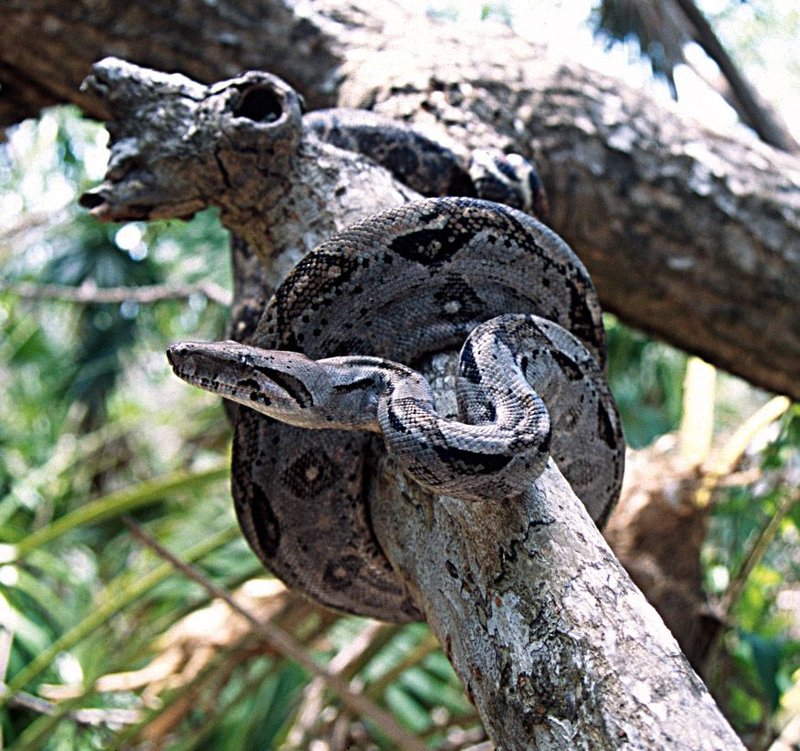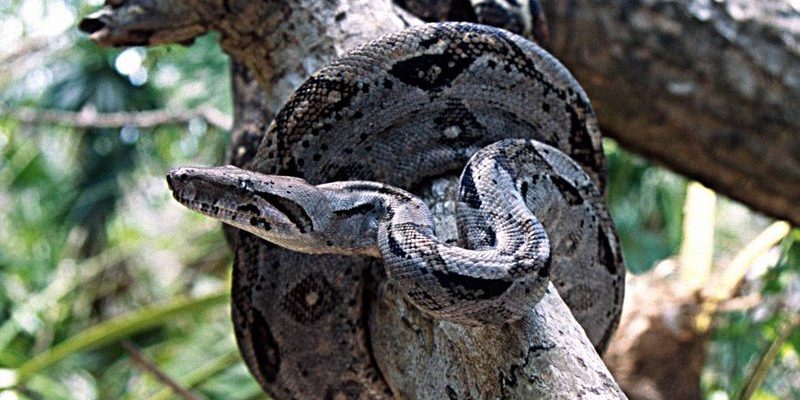
So, whether you’re a curious animal lover, thinking about getting one as a pet, or just want to impress your friends with some cool snake facts, let’s dive into the world of boa constrictors. We’ll explore some common myths and uncover the truths that will have you looking at these snakes with newfound respect.
Myth 1: Boa Constrictors Are Dangerous to Humans
You might be wondering if boa constrictors are a real threat to humans. The truth is, they’re generally not dangerous! These snakes are known for their role as constrictors, meaning they squeeze their prey to subdue it. However, they’re not likely to see humans as a meal. Most encounters with them are harmless, especially if they’re in their natural habitat.
In the wild, boa constrictors usually avoid humans. They’re more interested in hunting small animals, like rodents and birds. If you do find yourself near a boa, it’s best to remain calm and give it space. Often, these snakes would rather slither away than confront you. So, while they might look intimidating, they’re not out to get us!
Myth 2: Boa Constrictors Are Huge
When people think of boa constrictors, they often picture massive snakes that can really put you in a panic. While it’s true that some boas can grow quite large, they come in various sizes. The average boa constrictor ranges from about 6 to 12 feet in length. Some individuals can grow even larger, reaching up to 13 feet or more, but that’s not the norm.
It’s interesting to note that not all boa constrictors are the same size. There are different subspecies, some of which are smaller, like the rosy boa, which only gets about 2 to 4 feet long. So while they can be large, many are quite manageable in size, especially in captivity.
Myth 3: Boa Constrictors Kill Their Prey by Poisoning Them
You might have heard that boa constrictors kill their prey with venom, but that’s a myth! These snakes don’t have venomous fangs like some other snake species. Instead, they use their incredible strength to constrict their prey. Here’s how it works: once they grab hold of their meal, they wrap themselves around it and squeeze until the animal can no longer breathe. This method is effective and doesn’t require venom.
This technique might sound brutal, but it’s a natural part of how boa constrictors have evolved to hunt. They take their time and often swallow their prey whole, which is quite impressive! In fact, they can stretch their jaws wide enough to consume animals larger than their own head.
Myth 4: Boa Constrictors Are High-Maintenance Pets
If you’re thinking about getting a boa constrictor as a pet, you might be concerned about the care required. The good news is that, compared to some other reptiles, boa constrictors are relatively low-maintenance. They don’t need daily feeding and are fairly easy to handle once they become accustomed to their owners.
However, it’s essential to provide the right habitat for them. This includes an appropriately sized enclosure, proper heating, and humidity levels. Regular cleaning is necessary, and you’ll need to feed them appropriately sized prey, such as rodents. While they do require some specific care, with the right knowledge and setup, many people find boa constrictors to be rewarding pets.
Myth 5: Boa Constrictors Can Strangle Humans
Another common fear is that boa constrictors can strangle or suffocate humans. Thankfully, this is mostly a myth! While there have been rare cases where large boas have harmed people, it typically happens if the snake feels threatened or is improperly handled. Boa constrictors don’t instinctively attack humans, and they don’t have the capacity to constrain someone the way they do with their typical prey.
In captivity, responsible snake owners learn how to handle their boas properly. It’s all about understanding their behavior and creating a relaxed environment. When treated with care, boa constrictors are gentle creatures that can be enjoyed as pets without fear.
Myth 6: All Boa Constrictors Are the Same Color
You might think that all boa constrictors look similar, but they actually come in a stunning variety of colors and patterns! From the classic brown with black spots to more vivid colors like orange, yellow, and even albino variations, there’s a broad spectrum of beauty to these snakes.
Different locales and subspecies exhibit unique characteristics. For example, the Colombian boa is famous for its rich colors, while the common boa has a more muted palette. This diversity is one of the reasons they’re so popular among snake enthusiasts!
Myth 7: Boa Constrictors Are Hard to Breed
Breeding boa constrictors is often thought to be an intricate process that requires a lot of skill. While it does have its challenges, breeding these snakes is not as complicated as some might believe. With the right knowledge and setup, many hobbyists successfully breed boa constrictors.
The important factors include ensuring proper temperatures, humidity, and diet for the female boa before breeding. After mating, the female will carry the young for about 5 to 7 months before giving birth to live young. It’s crucial to research and understand the breeding cycle to ensure success. For those who are dedicated, breeding can be a rewarding experience!
In conclusion, boa constrictors are fascinating creatures that are often misunderstood. By debunking these common myths, we can appreciate them for the unique animals they are. If you’re considering one as a pet or simply interested in learning more, remember to focus on creating a supportive environment and understanding their needs. A little knowledge goes a long way in fostering a safe and enjoyable relationship with these amazing snakes!

